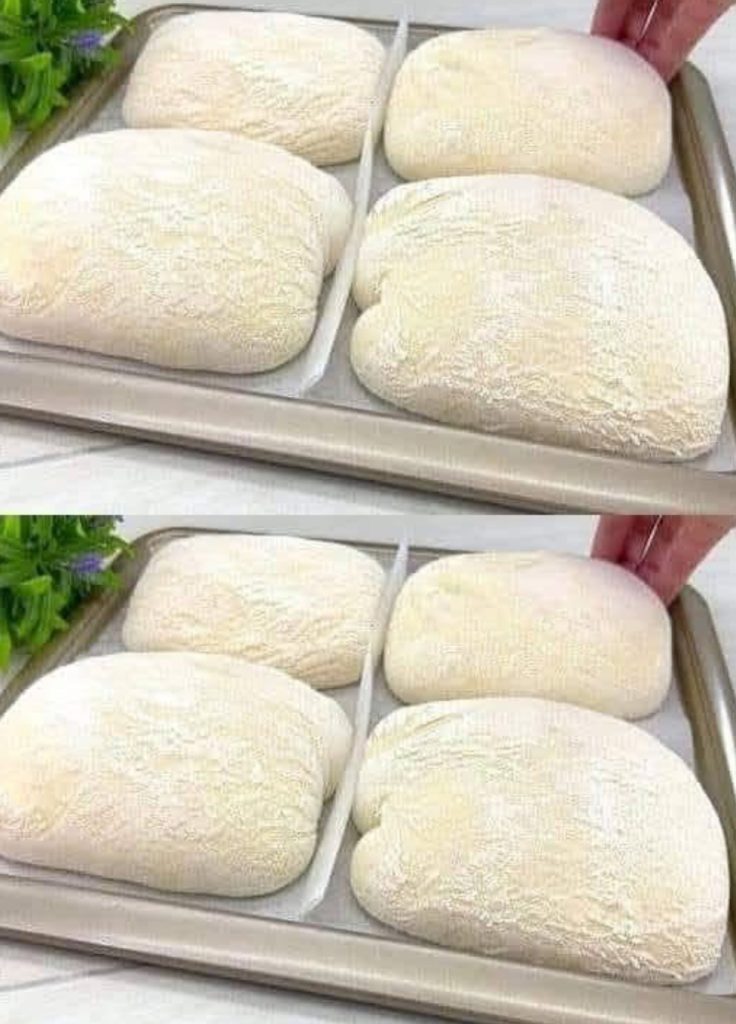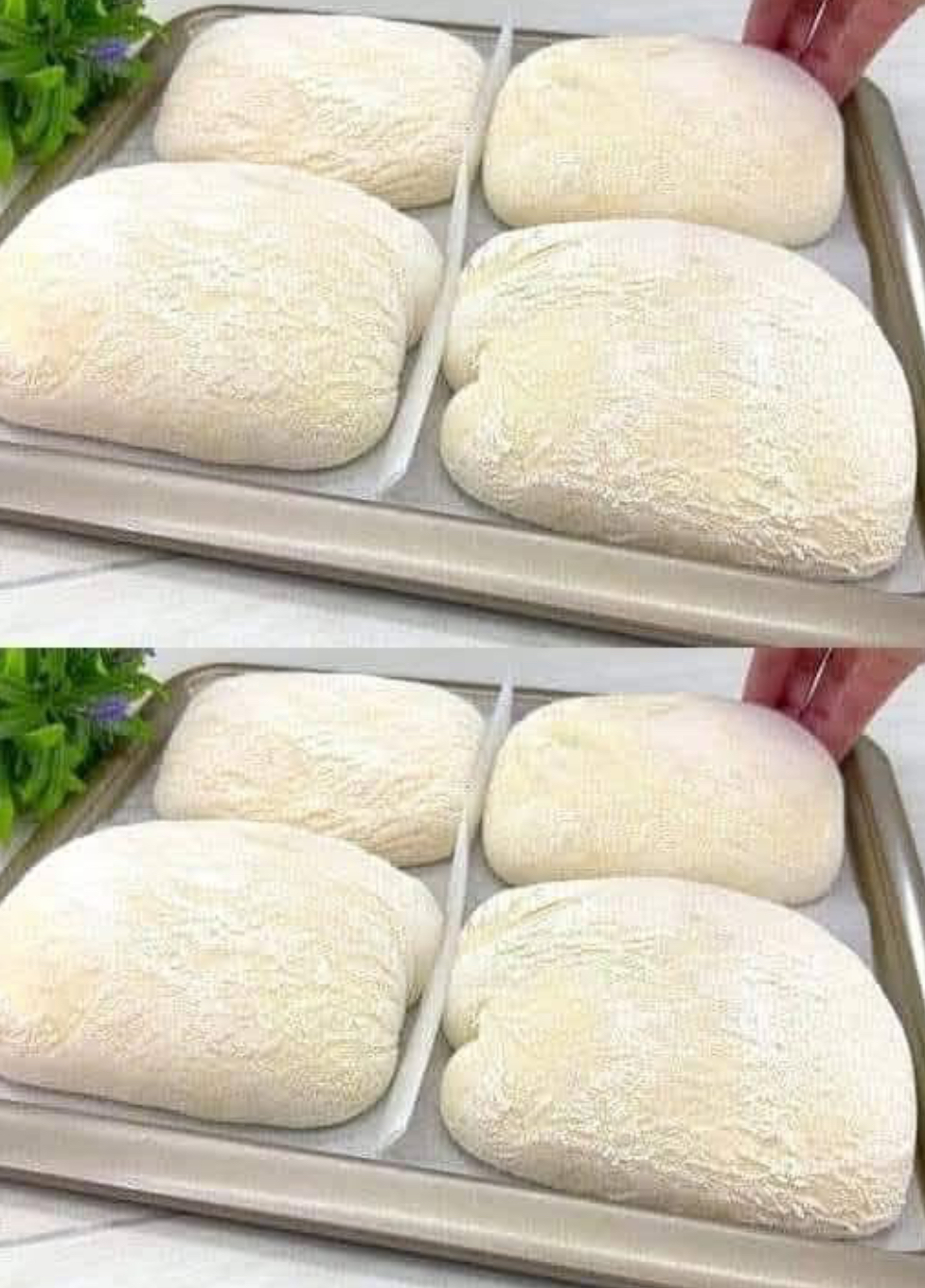
Introduction
Ciabatta, which means slipper in Italian, is a rustic, flat loaf with a chewy crust and open, airy crumb. Originating in Italy in the 1980s, this bread quickly gained popularity worldwide as the perfect pairing for sandwiches, bruschetta, or simply dipped in olive oil. With its delicate balance of crisp crust and light interior, ciabatta has become a favorite among bread lovers, chefs, and bakers alike.
Ingredients
For the Poolish (Starter):
- 1 ½ cups (180g) bread flour
- 1 cup (240ml) lukewarm water
- ¼ teaspoon instant yeast
For the Ciabatta Dough:
- 3 ½ cups (440g) bread flour
- 1 ¼ cups (300ml) water (room temperature)
- 2 teaspoons salt
- 1 teaspoon instant yeast
- 2 tablespoons olive oil
History
Ciabatta was created in 1982 by Arnaldo Cavallari, a baker from Veneto, Italy. It emerged as a response to the growing popularity of the French baguette, which was taking over the Italian market. Cavallari’s creation featured a high-hydration dough, creating a bread with a thin crust, irregular crumb structure, and mild flavor.
The versatility of ciabatta quickly won over bread lovers around the world, becoming a staple in cafes, bakeries, and homes. It’s now a key element in panini sandwichesand an ideal base for soups and oils.
Instructions
Step 1: Make the Poolish
- In a bowl, combine the bread flour, lukewarm water, and instant yeast.
- Stir until smooth. Cover with plastic wrap and let it sit at room temperature for 12-18 hours (or overnight).
- The poolish will be bubbly and fragrant when ready.
Step 2: Prepare the Dough
- In a large bowl, combine the poolish, bread flour, water, yeast, and salt.
- Mix by hand or with a dough hook until the ingredients come together.
- Add olive oil and continue mixing until a wet, sticky dough forms.
- Transfer the dough to a lightly oiled bowl and cover with plastic wrap.
Step 3: Bulk Fermentation (Proofing)
- Allow the dough to rest for 1 to 2 hours. During this time, perform stretch and folds every 30 minutes:
- Gently pull up one side of the dough and fold it over the center.
- Repeat this on all four sides. This strengthens the dough and creates structure.
Step 4: Shaping the Ciabatta
- Gently transfer the dough onto a well-floured surface. Be careful not to deflate it.
- Divide the dough into two or three equal portions.
- Shape each portion into a rectangle by gently folding the sides in and tucking the ends.
- Transfer to a parchment-lined baking sheet and cover with a cloth for 45 minutes to 1 hour for the final proof.
Step 5: Bake
- Preheat the oven to 475°F (245°C) and place a baking stone or tray inside to heat.
- Optional: Place a pan of hot water in the oven to create steam.
- Carefully transfer the ciabatta loaves onto the preheated tray/stone. Bake for 20-25 minutes until golden brown.
- Allow the loaves to cool completely on a wire rack.
Methods
- High Hydration Dough: The key to ciabatta’s airy structure is a high water content, which gives the crumb its signature holes.
- Stretch and Fold: This method gently develops gluten structure without aggressive kneading.
- Steam Baking: Adding steam helps create a crisp, golden crust while allowing the dough to expand.
Nutrition (per slice, approx. 50g):
- Calories: 120 kcal
- Carbohydrates: 22g
- Protein: 4g
- Fat: 1g
- Fiber: 1g
Benefits of Ciabatta Bread
- Light and Digestible: Thanks to its airy crumb and slow fermentation, ciabatta is gentle on the stomach.
- Versatile: Great for sandwiches, toast, or served alongside meals.
- Simple Ingredients: Made with just flour, water, yeast, and salt, ciabatta is free of additives or preservatives.
- Nutrient-Rich: Provides energy and essential carbohydrates with minimal fat.
For the Ciabatta Lovers
Bread enthusiasts admire ciabatta for its unique balance of crispy exterior and tender, chewy interior. Home bakers love the challenge of handling a wet dough, while sandwich lovers appreciate its ability to hold hearty fillings. Whether you’re dipping it into a bowl of olive oil or crafting the perfect panini, ciabatta delivers every time.
Formation
Ciabatta’s structure relies on a long fermentation and careful handling. Its open crumb develops from high hydration and gentle shaping, while steam baking produces the classic crisp crust. Mastering ciabatta requires patience, as the dough is delicate and sticky—but the result is worth the effort.
Conclusion
Ciabatta bread is an iconic Italian creation that continues to win hearts across the globe. With its airy crumb, golden crust, and incredible versatility, this bread is perfect for any occasion. From its humble beginnings in Veneto to your kitchen, ciabatta remains a timeless delight for bread lovers everywhere.
Ready to savor its magic? Bake your own ciabatta and enjoy the satisfaction of creating artisan bread at home!
